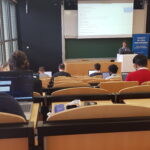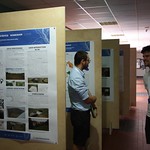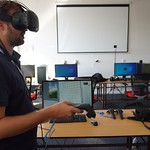Archives
Categories
Meta
Recent Posts
Connect to Us
Training in R
5 video tutorials from the ODSE 2021 encompassing theory and practice on spatial and geospatial computing in R.
Introduction to spatial and spatiotemporal data in R
By Tom Hengl (OpenGeoHub)
The first 30 minutes are dedicated to Software/libraries preparations and user support;
Software requirements: Python, Jupyter, QGIS, GRASS GIS, R
This tutorial starts with the explanation of general concepts and main advantages of docker containers, answering questions such as: What is Docker image and where to find it? Starting with the docker image opengeohub/py-geo.g? Which tag/version should I use? The session also shows how to install new OS and python packages inside the container, how to share files between the host machine and the container, OSGeo live ready to use in the VirtualBox.
Modeling with spatial and spatiotemporal data in R
By Tom Hengl (OpenGeoHub)
Software requirements: opengeohub/r-geo docker image (R, rgdal, terra, mlr3), QGIS, Google Earth Pro
This tutorial is an introduction to RStudio, and shows how to start packages and load data. It also serves as an introduction to spatiotemporal datasets, eumap spatiotemporal datasets, as for example: landcover 2000-2020 training dataset (Witjes et al, 2021). It also focuses on visualizing spatiotemporal data and data summaries.
Spatiotemporal Ensemble machine learning in R
By Tom Hengl and Carmelo Bonannella (OpenGeoHub)
Software requirements: opengeohub/r-geo docker image (R, rgdal, terra, mlr3), QGIS, Google Earth Pro
Content:
This tutorial is an introduction to Ensemble Machine Learning, covering the use of the mlr3 framework, selection of learners, fine-tuning, feature selection and model stacking. The focus is on using Machine Learning with spatial and spatiotemporal data, covering spatial interpolation with landmap package (vs geoR and similar geostatistical software), adding geographical distances and features to spatial interpolation, and fitting and using EML for predicting eumap land cover data (Witjes et al, 2021).
Computing with Cloud-Optimized GeoTIFFs in R
By Tom Hengl (OpenGeoHub)
Software requirements: opengeohub/r-geo docker image (R, rgdal, terra, mlr3), QGIS, Google Earth Pro
This tutorial is an introduction to the Cloud-Optimized GeoTIFFs, exploring scalable spatial databases, accessing COG files using rgdal and terra packages in R, making functions that run on COG files, spatial overlay with COG files (in parallel), and running spatial analysis and plotting results.
Data visualization: from R to Google Earth and QGIS
By Tom Hengl (OpenGeoHub)
Software requirements: opengeohub/r-geo docker image (R, rgdal, terra, mlr3), QGIS, Google Earth Pro
This tutorial shows how to access COG files using QGIS, how to use gdaltiler to produce plots in Google Earth (local copy), and how to use plotKML package to visualize data in Google Earth.








